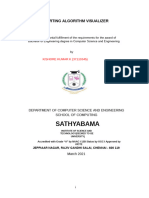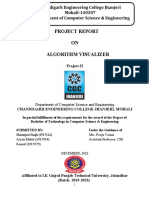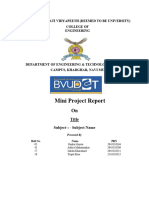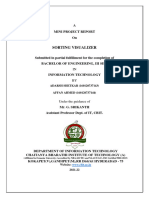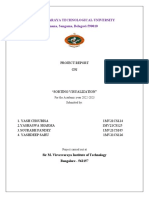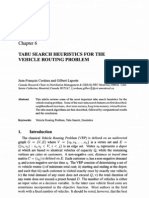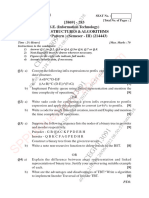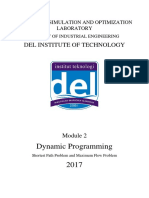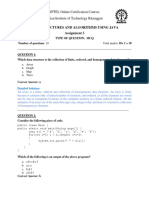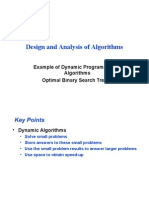0% found this document useful (0 votes)
13 views17 pagesSANDEEPSORTING
The document presents a mini-project titled 'Sorting Visualizer' developed by students Hemanth B D and Sandeep S Satihal at Government Engineering College, Karwar, aimed at providing an interactive web-based tool for understanding sorting algorithms. It features real-time graphical representations of various sorting techniques, allowing users to visualize and analyze algorithm performance while enhancing learning through code execution tracking and complexity insights. The project emphasizes user engagement and accessibility, making complex algorithms easier to comprehend for students and educators.
Uploaded by
somumudviCopyright
© © All Rights Reserved
We take content rights seriously. If you suspect this is your content, claim it here.
Available Formats
Download as PDF, TXT or read online on Scribd
0% found this document useful (0 votes)
13 views17 pagesSANDEEPSORTING
The document presents a mini-project titled 'Sorting Visualizer' developed by students Hemanth B D and Sandeep S Satihal at Government Engineering College, Karwar, aimed at providing an interactive web-based tool for understanding sorting algorithms. It features real-time graphical representations of various sorting techniques, allowing users to visualize and analyze algorithm performance while enhancing learning through code execution tracking and complexity insights. The project emphasizes user engagement and accessibility, making complex algorithms easier to comprehend for students and educators.
Uploaded by
somumudviCopyright
© © All Rights Reserved
We take content rights seriously. If you suspect this is your content, claim it here.
Available Formats
Download as PDF, TXT or read online on Scribd
/ 17













